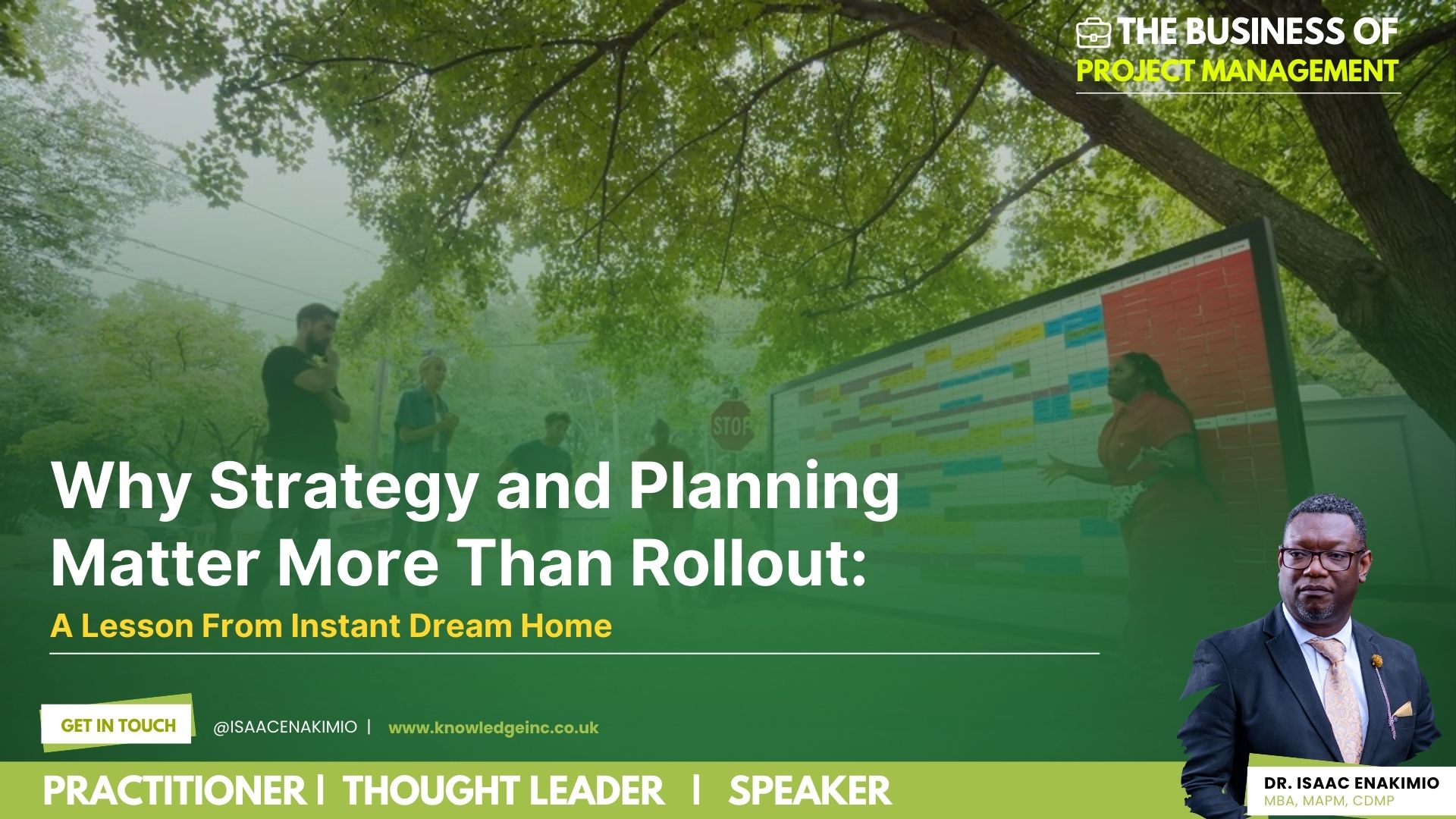If you’ve ever watched Instant Dream Home, you know exactly…
The Hidden Challenge in Project Delivery
Delivering projects on time, within budget, and to scope is already a formidable challenge. But when personal or political agendas enter the equation, project managers (PMs) are forced to navigate an intricate maze, one where priorities shift based on ambition rather than strategic alignment. Whether it is a leader pushing a pet initiative, manoeuvring for promotion, or consolidating power, these agendas can derail even the most carefully planned projects. For PMs, this is not just frustrating, it is a systemic issue that organisations must address head on.
The root cause? Ambiguity in power and authority. When leaders prioritise personal gains over the project’s objectives, PMs are left juggling conflicting directives, misaligned resources, and fractured teams. The solution lies in robust governance that empowers PMs with clear, unambiguous authority, combined with a cultural shift that aligns all stakeholders towards collective success. Using Lewin’s freeze unfreeze model, organisations can dismantle entrenched power struggles and create a governance structure that ensures projects deliver real value.
The Problem: Agendas Undermine Delivery
Consider a large scale IT system rollout. The PM has a structured plan, clear scope, timelines, and resources. Then, a senior leader insists on adding a flashy but unnecessary feature to leave their mark, despite it being out of scope and misaligned with user needs. Meanwhile, another department head hoards resources, causing bottlenecks. These are not hypothetical situations, they are the daily realities of many PMs.
When personal agendas infiltrate project management:
- Project scope becomes fluid, leading to constant rework and delays.
- Resources are diverted, causing inefficiencies and conflicts.
- Trust erodes, as PMs are forced to negotiate political minefields rather than focus on execution.
Without intervention, projects either limp to completion at significant cost or collapse under the weight of conflicting interests.
The Solution: Governance and Alignment
- Establish Crystal Clear Governance
Define and enforce a governance framework that positions the PM as the undisputed authority on project execution. This requires:
- A charter that explicitly defines roles, decision making power, and accountability. No loopholes.
- A formalised process for change requests, eliminating informal, agenda driven scope creep.
- Executive sponsorship that is vocal and unwavering, acting as a shield for the PM against political manoeuvring.
When governance is non-negotiable, leaders must channel their ambitions through proper channels rather than backdoor lobbying.
- Align Incentives Across the Board
Performance metrics and rewards must tie directly to project success, not individual visibility. If a leader’s bonus depends on delivering outcomes, rather than pushing their own priorities, they are less likely to disrupt projects for personal gain. This requires a top down commitment to collective objectives over siloed wins.
- Create Transparency with Communication
Open, consistent communication prevents political agendas from thriving in the shadows. PMs should:
- Use project dashboards to track and share real time progress.
- Maintain risk logs that publicly document issues caused by external interventions.
- Conduct regular stakeholder updates, ensuring all actions are visible and accountable.
When decisions and their impacts are exposed to scrutiny, it becomes far harder for personal agendas to operate unchecked.
Implementing Change: Lewin’s Freeze Unfreeze Model
To embed lasting change, organisations can apply Kurt Lewin’s change model: Unfreeze, Change, Refreeze.
🔹 Unfreeze: Challenge the Status Quo
Expose the true cost of personal agendas, whether in delays, cost overruns, or employee burnout. Use data from past projects to demonstrate how unchecked ambition has negatively impacted outcomes.
- Workshops or executive town halls can create awareness and urgency for reform.
- Case studies showing the consequences of misaligned leadership can trigger a mindset shift.
🔹 Change: Introduce the New Framework
Once the need for change is accepted:
- Roll out the new governance structure and accountability mechanisms.
- Train PMs to assert authority effectively, ensuring they have executive cover and backing.
- Create parallel innovation channels, such as idea incubators outside project scope, allowing ambitious leaders to contribute without interfering with execution.
- Pilot the new approach on a high profile project, demonstrating measurable benefits.
🔹 Refreeze: Lock in the New Normal
- Embed governance reforms into policy and leadership KPIs.
- Celebrate projects that succeed under the new system, reinforcing its effectiveness.
- Hold firm on consequences for those who attempt to bypass governance structures.
When these principles become standard practice, PMs can lead without constant interference, and leaders can focus on enabling success rather than controlling it.
The Payoff: A Culture of Trust and Execution
When PMs have the authority to steer projects without external disruptions, they deliver real value, on time, with efficiency, and aligned with strategic goals. But this does not mean stripping leaders of ambition, rather, it channels ambition into structured, productive avenues.
✅ PMs lead. ✅ Leaders support. ✅ Projects thrive.
This shift transforms organisations from battlegrounds of competing interests into high performing environments of trust, efficiency, and execution.
Author: Dr. Isaac Enakimio
Knowledge Incorporated
Business Transformation through Digital Strategies




